Non-Destructive Testing of Archaeological Findings by Grating-Based X-Ray Phase-Contrast and Dark-Field Imaging
Abstract
:1. Introduction
2. Materials and Methods
2.1. Grating-Based X-ray Phase-Contrast Imaging
2.2. Directional X-ray Dark-Field Imaging
2.3. The Experimental Setup
2.4. Details about the Examined Test and Archaeological Samples
3. Results
3.1. Pre-Measurements on Test Samples
3.2. X-ray Phase-Contrast Imaging of Archaeological Findings
3.2.1. Normalised Scatter Image and Scatter Plot of an Iron Fibula
3.2.2. Influence of Soil on Dark-Field Images of a Strap-End
3.2.3. Directional X-ray Dark-Field Imaging of a Bird Fibula
4. Discussion and Conclusions
Acknowledgments
Author Contributions
Conflicts of Interest
References
- Gasteiger, S. Strategien zum Umgang mit archäologischen Eisenfunden in der bayerischen Bodendenkmalpflege. In Fundmassen: Innovative Strategien zur Auswertung Frühmittelalterlicher Quellenbestände; Materialhefte zur Archäologie in Baden-Württemberg 97; Brather, S., Krausse, D., Eds.; Konrad Theiss Verlag: Stuttgart, Germany, 2013; pp. 115–130. [Google Scholar]
- Nowak-Böck, B. Erhalt und Erfassung organischer Befunde in der bayerischen Bodendenkmalpflege. In Fundmassen: Innovative Strategien zur Auswertung Frühmittelalterlicher Quellenbestände; Materialhefte zur Archäologie in Baden-Württemberg 97; Brather, S., Krausse, D., Eds.; Konrad Theiss Verlag: Stuttgart, Germany, 2013; pp. 131–143. [Google Scholar]
- Casali, F. X-ray and neutron digital radiography and computed tomography for cultural heritage. In Physical Techniques in the Study of Art, Archaeology and Cultural Heritage; Elsevier: Amsterdam, The Netherlands, 2006; Volume 1, pp. 41–123. [Google Scholar]
- Morigi, M.; Casali, F.; Bettuzzi, M.; Brancaccio, R.; d’Errico, V. Application of X-ray computed tomography to cultural heritage diagnostics. Appl. Phys. A 2010, 100, 653–661. [Google Scholar] [CrossRef]
- Mantler, M.; Schreiner, M. X-ray fluorescence spectrometry in art and archaeology. X-ray Spectrom. 2000, 29, 3–17. [Google Scholar] [CrossRef]
- Pfeiffer, F.; Weitkamp, T.; Bunk, O.; David, C. Phase retrieval and differential phase-contrast imaging with low-brilliance X-ray sources. Nat. Phys. 2006, 2, 258–261. [Google Scholar] [CrossRef]
- Weitkamp, T.; Diaz, A.; David, C.; Pfeiffer, F.; Stampanoni, M.; Cloetens, P.; Ziegler, E. X-ray phase imaging with a grating interferometer. Opt. Express 2005, 13, 6296–6304. [Google Scholar] [CrossRef] [PubMed]
- Revol, V.; Jerjen, I.; Kottler, C.; Schütz, P.; Kaufmann, R.; Lüthi, T.; Sennhauser, U.; Straumann, U.; Urban, C. Sub-pixel porosity revealed by X-ray scatter dark field imaging. J. Appl. Phys. 2011, 110. [Google Scholar] [CrossRef]
- Pfeiffer, F.; Bech, M.; Bunk, O.; Kraft, P.; Eikenberry, E.F.; Brönnimann, C.; Grünzweig, C.; David, C. Hard-X-ray dark-field imaging using a grating interferometer. Nat. Mater. 2008, 7, 134–137. [Google Scholar] [CrossRef] [PubMed]
- Yashiro, W.; Terui, Y.; Kawabata, K.; Momose, A. On the origin of visibility contrast in X-ray Talbot interferometry. Opt. Express 2010, 18, 16890–16901. [Google Scholar] [CrossRef] [PubMed]
- Yashiro, W.; Momose, A. Effects of unresolvable edges in grating-based X-ray differential phase imaging. Opt. Express 2015, 23, 9233–9251. [Google Scholar] [CrossRef] [PubMed]
- Jensen, T.H.; Bech, M.; Bunk, O.; Donath, T.; David, C.; Feidenhans’l, R.; Pfeiffer, F. Directional X-ray dark-field imaging. Phys. Med. Biol. 2010, 55, 3317. [Google Scholar] [CrossRef] [PubMed]
- Jensen, T.H.; Bech, M.; Zanette, I.; Weitkamp, T.; David, C.; Deyhle, H.; Rutishauser, S.; Reznikova, E.; Mohr, J.; Feidenhans’l, R.; et al. Directional X-ray dark-field imaging of strongly ordered systems. Phys. Rev. B 2010, 82, 214103. [Google Scholar] [CrossRef]
- Bayer, F.; Zabler, S.; Brendel, C.; Pelzer, G.; Rieger, J.; Ritter, A.; Weber, T.; Michel, T.; Anton, G. Projection angle dependence in grating-based X-ray dark-field imaging of ordered structures. Opt. Express 2013, 21, 19922–19933. [Google Scholar] [CrossRef] [PubMed]
- Potdevin, G.; Malecki, A.; Biernath, T.; Bech, M.; Jensen, T.H.; Feidenhans, R.; Zanette, I.; Weitkamp, T.; Kenntner, J.; Mohr, J.; et al. X-ray vector radiography for bone micro-architecture diagnostics. Phys. Med. Biol. 2012, 57, 3451. [Google Scholar] [CrossRef] [PubMed]
- Schaff, F.; Malecki, A.; Potdevin, G.; Eggl, E.; Noël, P.B.; Baum, T.; Garcia, E.G.; Bauer, J.S.; Pfeiffer, F. Correlation of X-ray vector radiography to bone micro-architecture. Sci. Rep. 2014, 4, 3695. [Google Scholar] [CrossRef] [PubMed]
- Baum, T.; Eggl, E.; Malecki, A.; Schaff, F.; Potdevin, G.; Gordijenko, O.; Garcia, E.G.; Burgkart, R.; Rummeny, E.J.; Noël, P.B.; et al. X-ray Dark-Field Vector Radiography—A Novel Technique for Osteoporosis Imaging. J. Comput. Assist. Tomogr. 2015, 39, 286–289. [Google Scholar] [CrossRef] [PubMed]
- Revol, V.; Kottler, C.; Kaufmann, R.; Neels, A.; Dommann, A. Orientation-selective X-ray dark field imaging of ordered systems. J. Appl. Phys. 2012, 112, 114903. [Google Scholar] [CrossRef]
- Revol, V.; Plank, B.; Kaufmann, R.; Kastner, J.; Kottler, C.; Neels, A. Laminate fibre structure characterisation of carbon fibre-reinforced polymers by X-ray scatter dark field imaging with a grating interferometer. NDT E Int. 2013, 58, 64–71. [Google Scholar] [CrossRef]
- Prade, F.; Schaff, F.; Senck, S.; Meyer, P.; Mohr, J.; Kastner, J.; Pfeiffer, F. Nondestructive characterization of fiber orientation in short fiber reinforced polymer composites with X-ray vector radiography. NDT E Int. 2017, 86, 65–72. [Google Scholar] [CrossRef]
- Malecki, A.; Potdevin, G.; Biernath, T.; Eggl, E.; Willer, K.; Lasser, T.; Maisenbacher, J.; Gibmeier, J.; Wanner, A.; Pfeiffer, F. X-ray tensor tomography. Europhys. Lett. 2014, 105, 38002. [Google Scholar] [CrossRef]
- Bayer, F.L.; Hu, S.; Maier, A.; Weber, T.; Anton, G.; Michel, T.; Riess, C.P. Reconstruction of scalar and vectorial components in X-ray dark-field tomography. Proc. Nat. Acad. Sci. USA 2014, 111, 12699–12704. [Google Scholar] [CrossRef] [PubMed]
- Vogel, J.; Schaff, F.; Fehringer, A.; Jud, C.; Wieczorek, M.; Pfeiffer, F.; Lasser, T. Constrained X-ray tensor tomography reconstruction. Opt. Express 2015, 23, 15134–15151. [Google Scholar] [CrossRef] [PubMed]
- Arrizón, V.; López-Olazagasti, E. Binary phase grating for array generation at 1/16 of Talbot length. J. Opt. Soc. Am. A 1995, 12, 801–804. [Google Scholar] [CrossRef]
- Suleski, T.J. Generation of Lohmann images from binary-phase Talbot array illuminators. Appl. Opt. 1997, 36, 4686–4691. [Google Scholar] [CrossRef] [PubMed]
- Fitzgerald, R. Phase-sensitive X-ray imaging. Phys. Today 2000, 53, 23–26. [Google Scholar] [CrossRef]
- Wang, Z.; Stampanoni, M. Quantitative X-ray radiography using grating interferometry: A feasibility study. Phys. Med. Biol. 2013, 58, 6815–6826. [Google Scholar] [CrossRef] [PubMed]
- Scherer, K.; Braig, E.; Ehn, S.; Schock, J.; Wolf, J.; Birnbacher, L.; Chabior, M.; Herzen, J.; Mayr, D.; Grandl, S.; et al. Improved Diagnostics by Assessing the Micromorphology of Breast Calcifications via X-Ray Dark-Field Radiography. Sci. Rep. 2016, 6, 36991. [Google Scholar] [CrossRef] [PubMed]
- Nesterets, Y.I. On the origins of decoherence and extinction contrast in phase-contrast imaging. Opt. Commun. 2008, 281, 533–542. [Google Scholar] [CrossRef]
- Revol, V.; Kottler, C.; Kaufmann, R.; Cardot, F.; Niedermann, P.; Jerjen, I.; Lüthi, T.; Straumann, U.; Sennhauser, U.; Urban, C. Sensing small angle scattering with an X-ray grating interferometer. In Proceedings of the 2010 IEEE on Nuclear Science Symposium Conference Record (NSS/MIC), Knoxville, TN, USA, 30 October–6 November 2010; pp. 892–895. [Google Scholar]
- Rieger, J.; Meyer, P.; Horn, F.; Pelzer, G.; Michel, T.; Mohr, J.; Anton, G. Optimization procedure for a Talbot-Lau X-ray phase-contrast imaging system. J. Instrum. 2017, 12, P04018. [Google Scholar] [CrossRef]
- Meyer, P.; Schulz, J. Chapter 16—Deep X-ray Lithography. In Micromanufacturing Engineering and Technology, 2nd ed.; Qin, Y., Ed.; Micro and Nano Technologies, William Andrew Publishing: Boston, MA, USA, 2015; pp. 365–391. [Google Scholar]
- Ritter, A.; Bartl, P.; Bayer, F.; Gödel, K.C.; Haas, W.; Michel, T.; Pelzer, G.; Rieger, J.; Weber, T.; Zang, A.; et al. Simulation framework for coherent and incoherent X-ray imaging and its application in Talbot-Lau dark-field imaging. Opt. Express 2014, 22, 23276–23289. [Google Scholar] [CrossRef] [PubMed]
- Siemens.com. Simulation of X-ray Spectra. 2016. Available online: www.siemens.com/x-ray-spectra (accessed on 28 March 2018).
- Yashiro, W.; Vagovič, P.; Momose, A. Effect of beam hardening on a visibility-contrast image obtained by X-ray grating interferometry. Opt. Express 2015, 23, 23462–23471. [Google Scholar] [CrossRef] [PubMed]
- Pelzer, G.; Anton, G.; Horn, F.; Rieger, J.; Ritter, A.; Wandner, J.; Weber, T.; Michel, T. A beam hardening and dispersion correction for X-ray dark-field radiography. Med. Phys. 2016, 43, 2774–2779. [Google Scholar] [CrossRef] [PubMed]
- Hubbell, J.H.; Seltzer, S.M. National Institute of Standards and Technology, X-Ray Mass Attenuation Coefficients. 2017. Available online: https://physics.nist.gov/PhysRefData/XrayMassCoef/ComTab/concrete.html (accessed on 28 February 2018).
- Donath, T.; Chabior, M.; Pfeiffer, F.; Bunk, O.; Reznikova, E.; Mohr, J.; Hempel, E.; Popescu, S.; Hoheisel, M.; Schuster, M.; et al. Inverse geometry for grating-based X-ray phase-contrast imaging. J. Appl. Phys. 2009, 106, 054703. [Google Scholar] [CrossRef]
- Strobl, M.; Betz, B.; Harti, R.; Hilger, A.; Kardjilov, N.; Manke, I.; Gruenzweig, C. Wavelength-dispersive dark-field contrast: Micrometre structure resolution in neutron imaging with gratings. J. Appl. Crystallogr. 2016, 49, 569–573. [Google Scholar] [CrossRef]
- Johnson, T.R. Dual-energy CT: General principles. Am. J. Roentgenol. 2012, 199, S3–S8. [Google Scholar] [CrossRef] [PubMed]
- Kottler, C.; Revol, V.; Kaufmann, R.; Urban, C. Dual energy phase contrast X-ray imaging with Talbot-Lau interferometer. J. Appl. Phys. 2010, 108, 114906. [Google Scholar] [CrossRef]
- Bech, M.; Bunk, O.; Donath, T.; Feidenhans, R.; David, C.; Pfeiffer, F. Quantitative X-ray dark-field computed tomography. Phys. Med. Biol. 2010, 55, 5529. [Google Scholar] [CrossRef] [PubMed]
- Sharma, Y.; Wieczorek, M.; Schaff, F.; Seyyedi, S.; Prade, F.; Pfeiffer, F.; Lasser, T. Six dimensional X-ray Tensor Tomography with a compact laboratory setup. Appl. Phys. Lett. 2016, 109, 134102. [Google Scholar] [CrossRef]
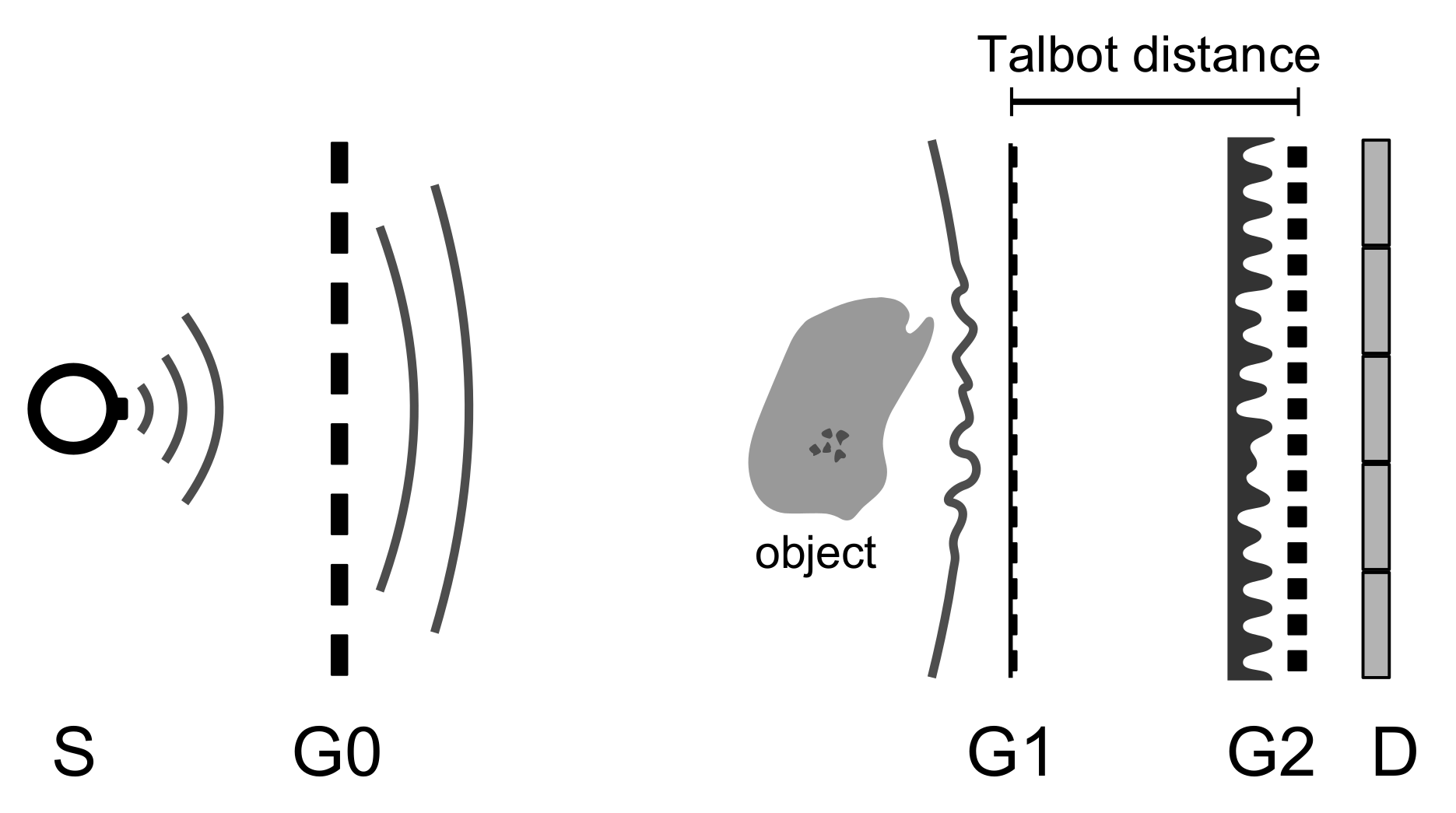
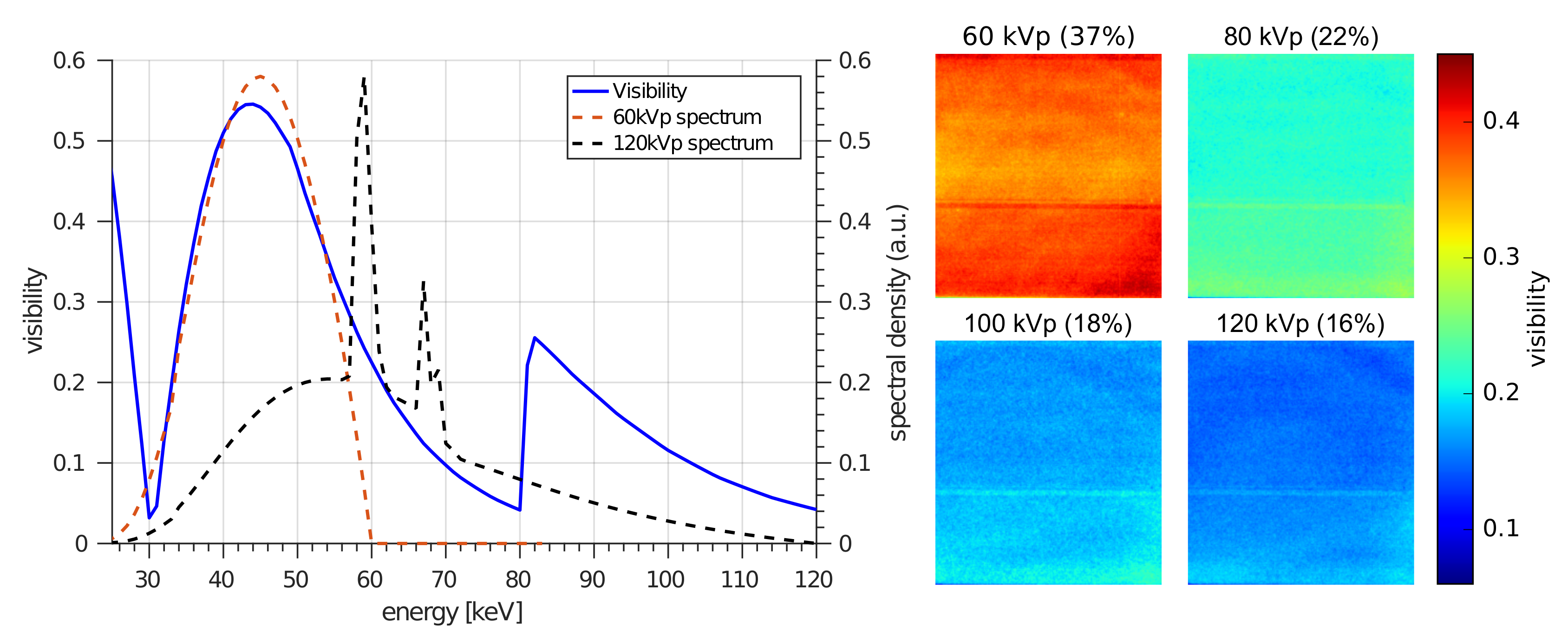
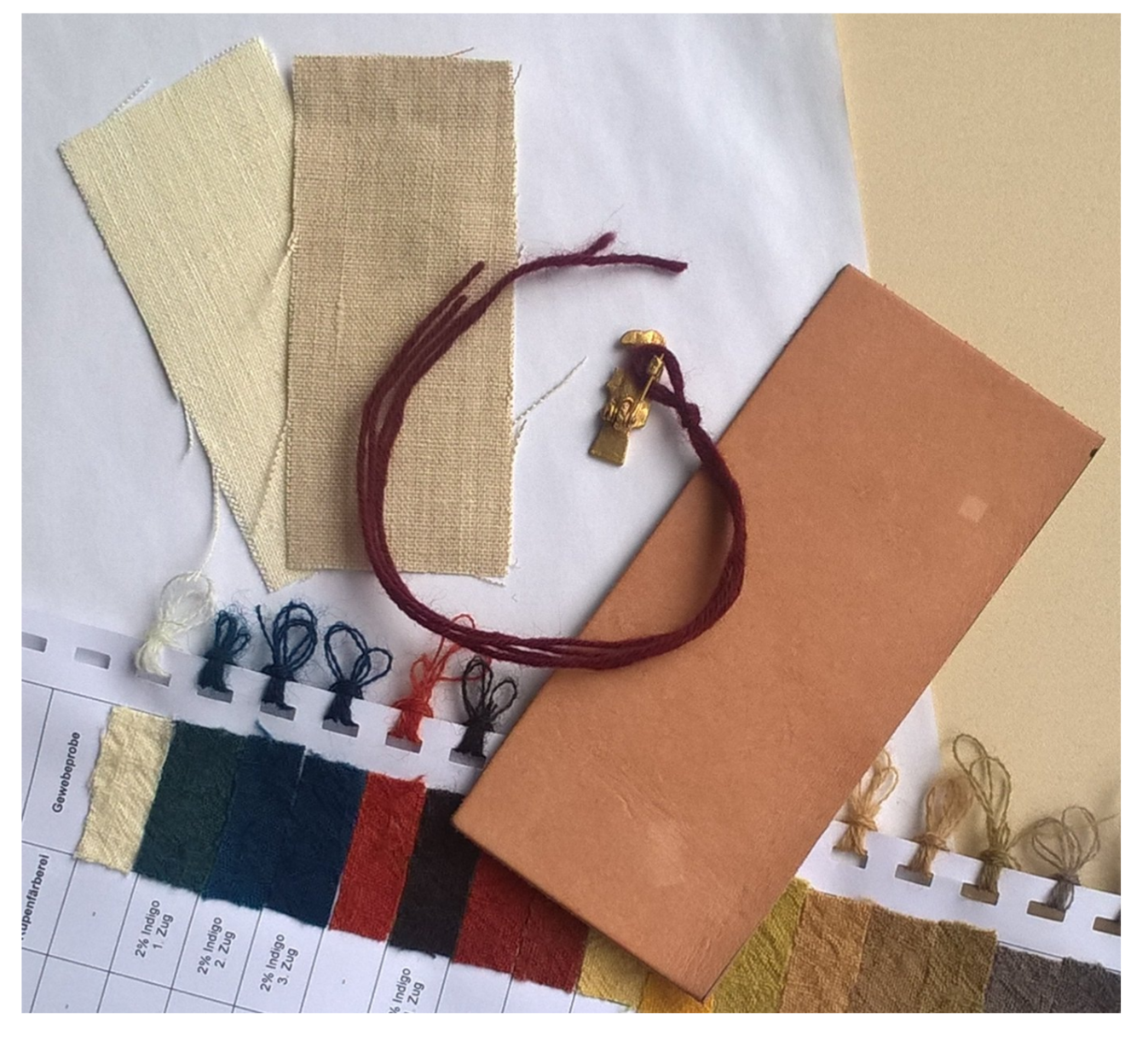
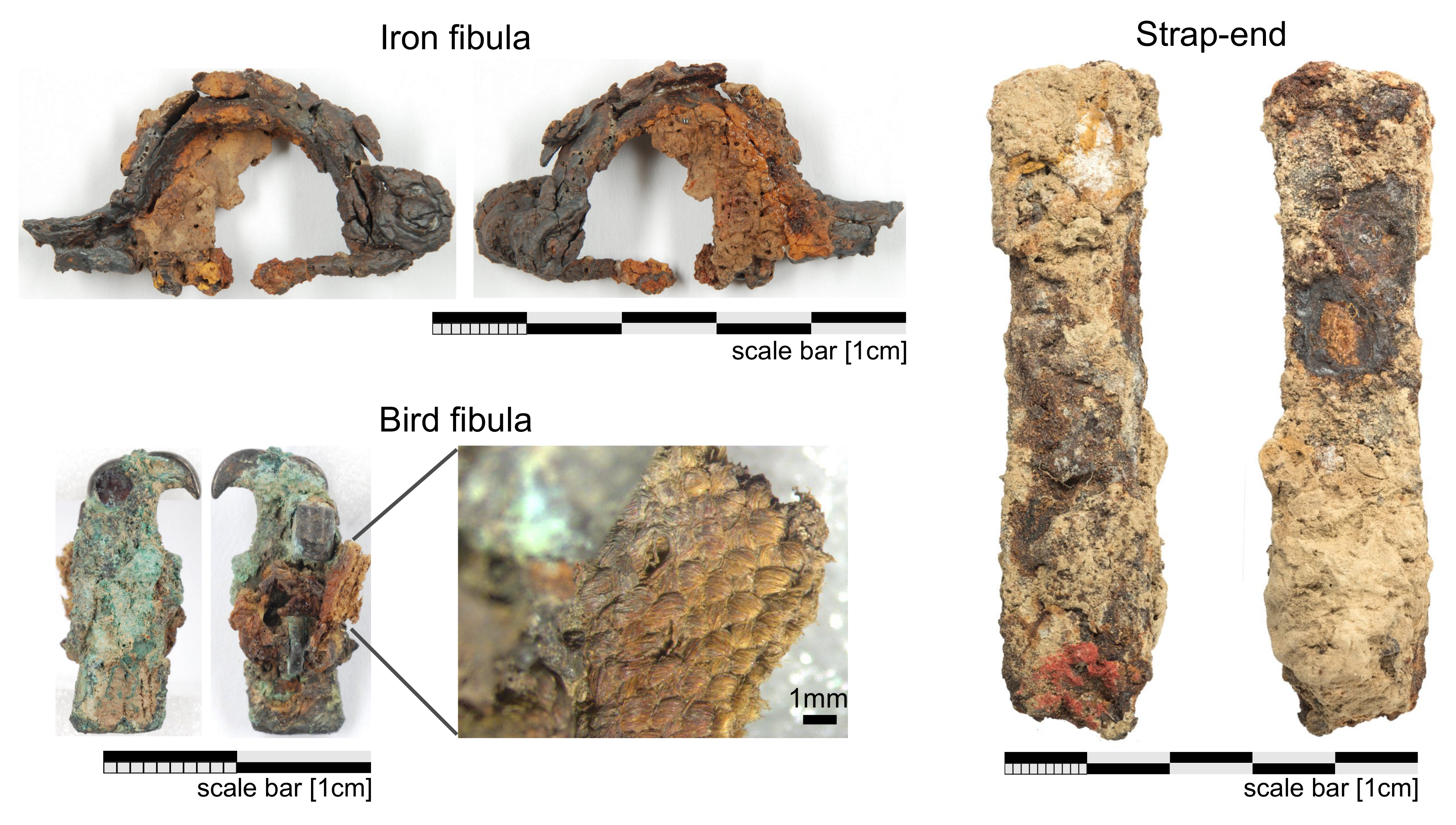
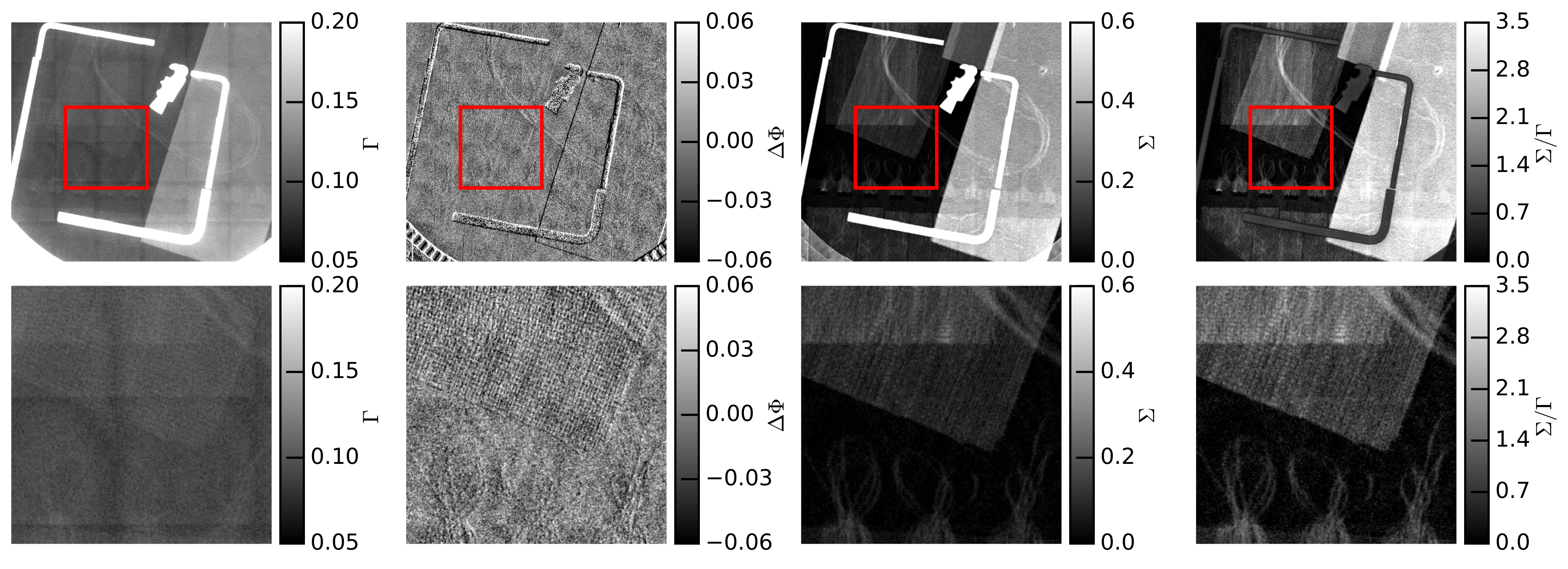
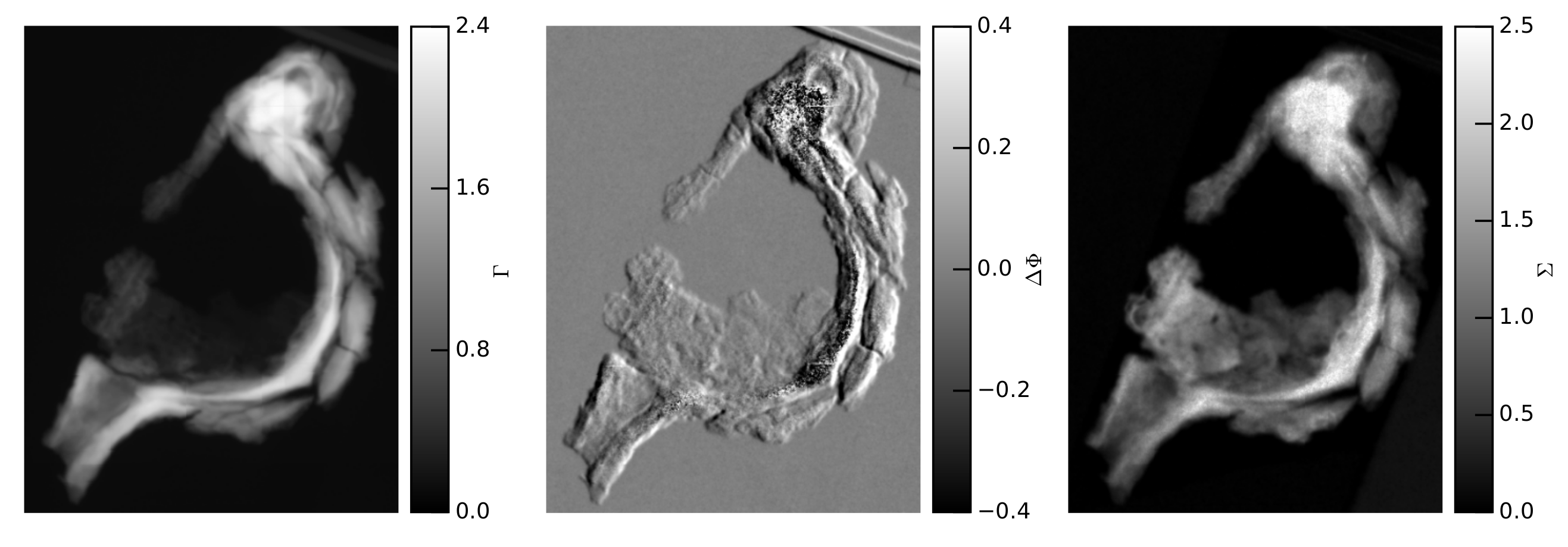
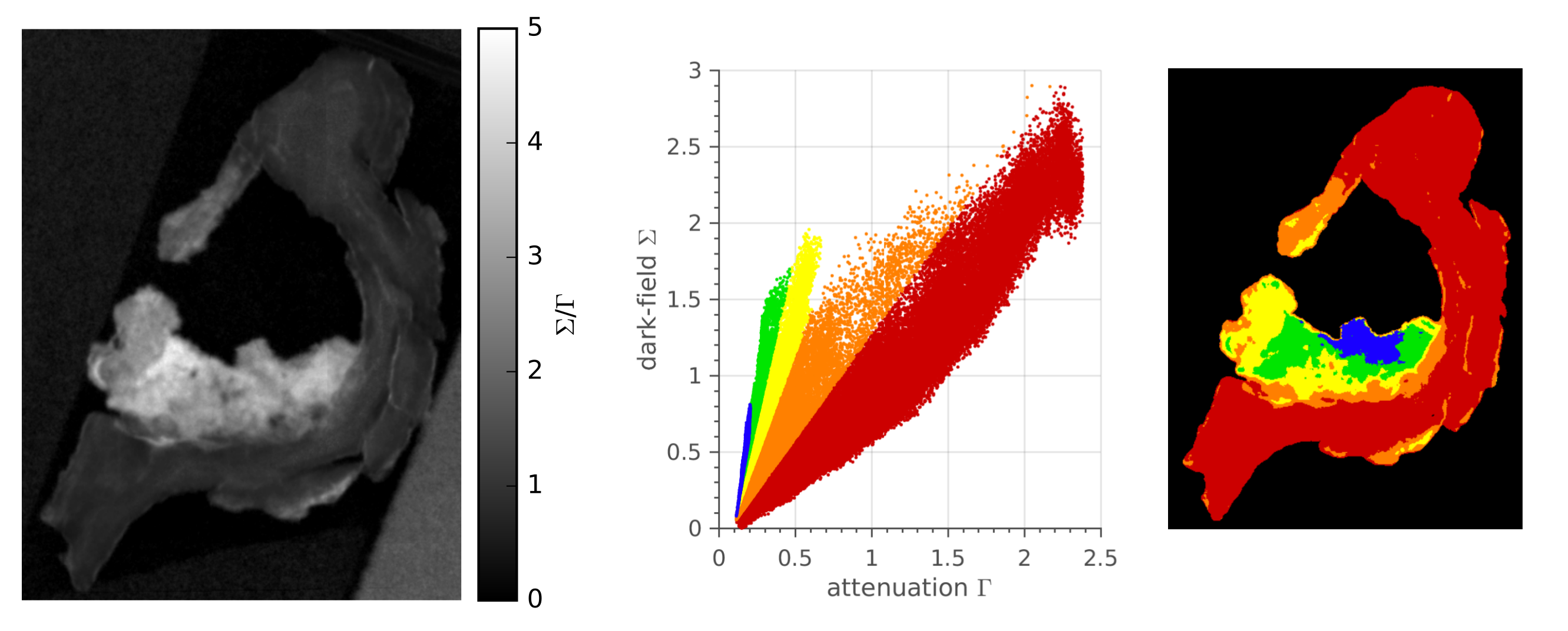

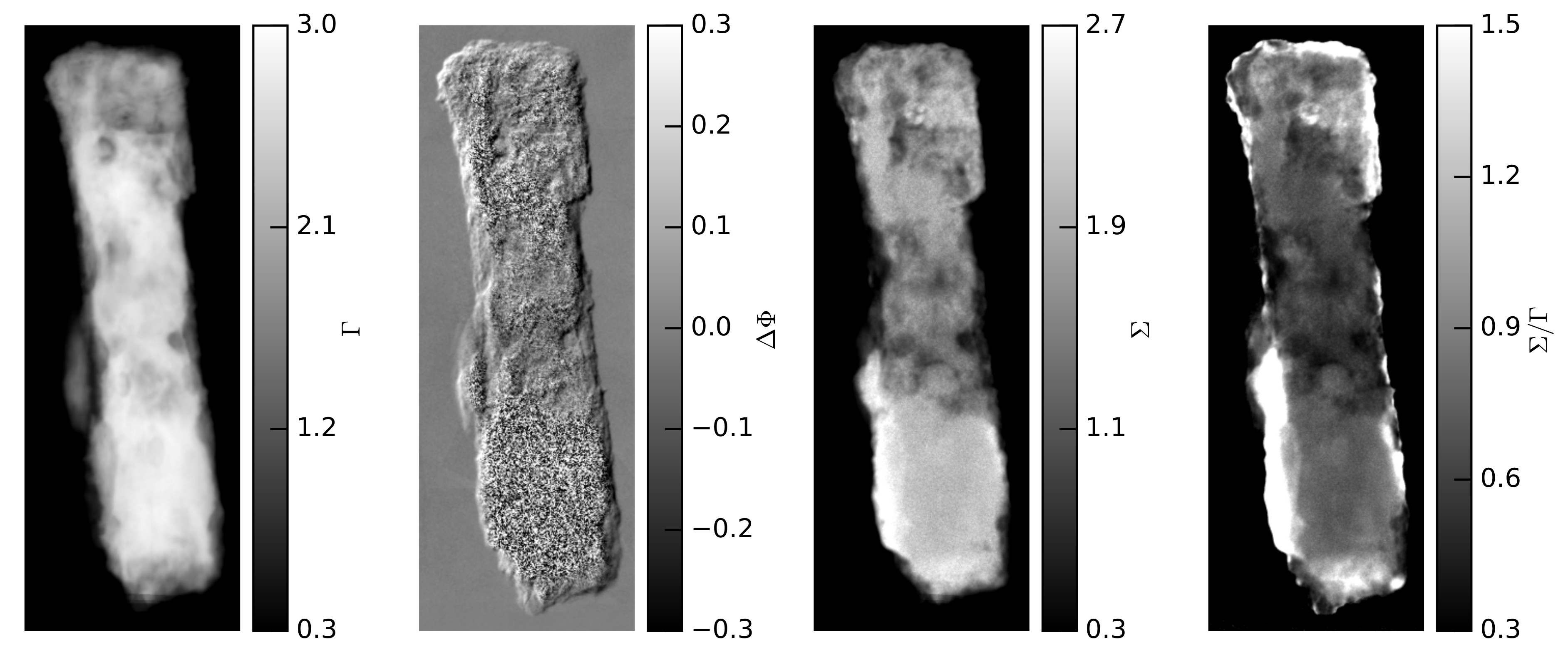

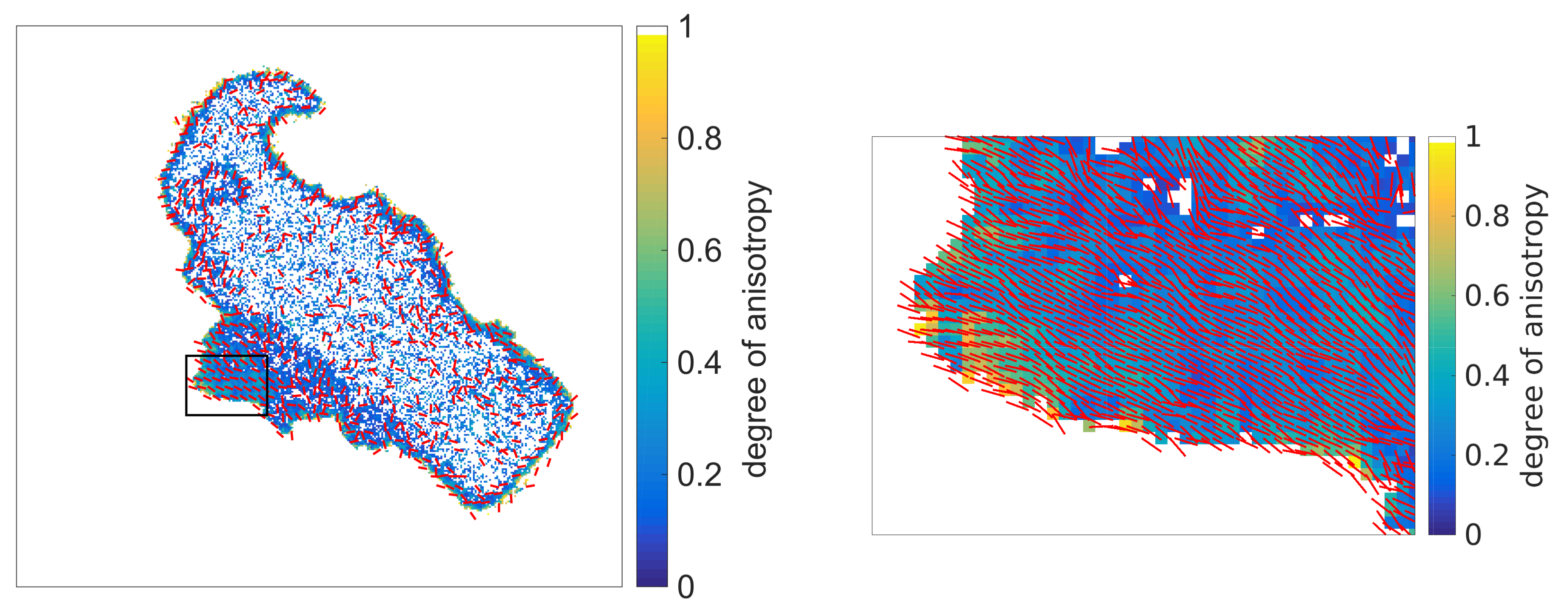
| Grating | Period (m) | Height (m) | Duty Cycle | Distances (cm) | |||
|---|---|---|---|---|---|---|---|
| G0 | 13.31 | 200 | 0.5 | 90 | 16 | ||
| G1 | 5.71 | 6.3 | 0.3 | 68 | 79.5 | ||
| G2 | 10 | 200 | 0.5 | 6.1 | |||
© 2018 by the authors. Licensee MDPI, Basel, Switzerland. This article is an open access article distributed under the terms and conditions of the Creative Commons Attribution (CC BY) license (http://creativecommons.org/licenses/by/4.0/).
Share and Cite
Ludwig, V.; Seifert, M.; Niepold, T.; Pelzer, G.; Rieger, J.; Ziegler, J.; Michel, T.; Anton, G. Non-Destructive Testing of Archaeological Findings by Grating-Based X-Ray Phase-Contrast and Dark-Field Imaging. J. Imaging 2018, 4, 58. https://doi.org/10.3390/jimaging4040058
Ludwig V, Seifert M, Niepold T, Pelzer G, Rieger J, Ziegler J, Michel T, Anton G. Non-Destructive Testing of Archaeological Findings by Grating-Based X-Ray Phase-Contrast and Dark-Field Imaging. Journal of Imaging. 2018; 4(4):58. https://doi.org/10.3390/jimaging4040058
Chicago/Turabian StyleLudwig, Veronika, Maria Seifert, Tracy Niepold, Georg Pelzer, Jens Rieger, Julia Ziegler, Thilo Michel, and Gisela Anton. 2018. "Non-Destructive Testing of Archaeological Findings by Grating-Based X-Ray Phase-Contrast and Dark-Field Imaging" Journal of Imaging 4, no. 4: 58. https://doi.org/10.3390/jimaging4040058
APA StyleLudwig, V., Seifert, M., Niepold, T., Pelzer, G., Rieger, J., Ziegler, J., Michel, T., & Anton, G. (2018). Non-Destructive Testing of Archaeological Findings by Grating-Based X-Ray Phase-Contrast and Dark-Field Imaging. Journal of Imaging, 4(4), 58. https://doi.org/10.3390/jimaging4040058





